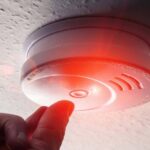Electrical Installation Domestic
The entire process of connecting the accessories to distribute electricity to different appliances and equipment at home is referred to as electrical installation domestic. It includes the design, conduits, and fittings, as well as termination.
Cables transmit electricity to switches or receptacles. They can be of various sizes based on the circuit’s cross-section that must be connected to the appliance or fixture.
Wiring
The wires that connect different appliances and equipment comprise the wiring in a electrical installation in the home. The wires can be buried underground or within the ceilings and walls. The electrician must be proficient in the proper operation of these lines and safely, so that they don’t start fires or damage to devices that are powered by wires.
National and local codes govern electrical wiring in a home. These codes establish safety standards for the design and installation of electrical systems in buildings, such as the type of cable or wire to be used.
In addition to these safety rules wiring must also be sized to fit the circuits powered by it. This is crucial because wires that are too small for the job could overload a circuit, which could cause overheating and malfunctioning equipment.
The wires that are used to connect electrical devices in homes are available in various sizes and can be insulated with different materials. Copper wires can be protected with a variety materials, including Vulcanized Indian Rubber (VIR), or Lead-Aluminum alloy (95% Lead and 5 percent Aluminum).
The conduit or piping is then used to connect the insulation wires. Conduit may be plastic, metal, or flexible. The fill capacity is the maximum amount of wires that can pass through the conduit.
The most popular type of wire for electrical installations in residential homes is the non-metallic (NM) cable. It is made up of two or more wires that are wrapped in a colored sheathing. They typically have one or more hot wires, as well as a neutral and ground wire.
Outlets
A vital part of your electrical wiring are the electrical outlets. They enable you to switch on lights, appliances, and more. They also safeguard you from electrocution. Outlets can also help your home become more efficient in terms of energy use.
Outlets come in different sizes and styles and can be used for various applications. Choosing the best type for each room can make an enormous difference to your safety, comfort and energy consumption.
There are two kinds of outlets: receptacles and lighting outlets. Receptacles are made to accommodate cord- and plug-connected devices, while lighting outlets are designed to be plugged into a fixture or lamp that requires direct wiring.
A 3-prong outlet is the most popular type of outlet in America. They are more secure than outlets with two prongs and include an additional ground wire. These outlets are compliant with all current building codes . They are suggested for use with light electricity at home or in offices.
A switched outlet is a well-known type of outlet. It allows you to plug in appliances and lamps even when they are not being used. It conserves electricity and makes it simpler to control electrical appliances.
Some homeowners choose to install floor outlets in their homes for the ease of maintenance and cleaning. They are ideal for large spaces where connecting cables to a wall could be dangerous or ugly.
Some people prefer to install outlets that come with a built-in USB charging port for tablets, smartphones and other electronic devices. These outlets do not require an additional power cord and can be placed in rooms that contain expensive equipment such as TVs, computers or refrigerators.
Switches
They regulate the flow of electricity by opening and closing the connections between two wires. They are a crucial part of any electrical installation home as they permit you switch off or on the power to your outlets, lights, and other appliances.
A single-pole light switch is one of the most common switches used in electrical installations. It manages a single light fixture from one place. They are simple to install and are available in a variety designs and colors.
If you’re installing a brand new switch, make sure it’s equipped with the proper amperage and voltage ratings that are appropriate for the circuit. If it isn’t, you can replace it with the correct size and type of rated.
The switch controls the current by either closing or opening the connection between the black (hot) wire and the white wire. The current flows through the switch as you flip it. It then returns to ground to complete the circuit.
You can change the state of a connection in some switches by moving an actuator. This could be an actuator, a slide or a lever. Actuation is the mechanism that alters the state of a connection. It is important to select the correct actuator for your needs.
First, Installation disconnect the wires from the switch you’re replacing, and then take the switch from its electrical box. The new switch will need to be connected to the wires by long-nose pliers or another method that wraps the wire around the terminal screw. Then you can install it into the electrical box.
Circuit Breakers
Circuit breakers in electrical installations domestically are devices which interrupt the flow of electricity when there is an issue. These switches are designed to protect against short circuits and other potential dangers to safety, such as electric shock and fire.
They function by detecting excess current or heat in the wiring and then shutting off the wire’s power. They are an essential part of an electrical installation and should not be overlooked when working on your home’s electrical system.
They are able to be manually switched from the service panel, however they also «trip» automatically when a safety risk is discovered. This includes ground faults and short circuits, as well as arc fault conditions.
There are many kinds of circuit breakers. However, every one performs the same function. They detect excessive temperature or current, and then remove the power supply until the issue can be fixed without risk. Some breakers can be reset, and some require replacement after they’ve been tripped.
Low-voltage circuit breakers are the simplest type, and they use an energy spring that is stored to throw the switch and cut off contact from the circuit. These breakers let you manually cut off and reset power delivery with the flip of a switch.
Medium-voltage circuit breakers are usually connected to a bar or bus. They can be separated from the circuit using draw-out construction. This permits removal of breaker without disturbing power connections. This permits electricians to add circuits or replace broken breakers.
These are the most sought-after types of circuit breakers and are utilized in both commercial and residential properties. They are rated based on the amount of fault current that they can interrupt. They are a more affordable alternative to more sophisticated devices, such as GFCIs or Arc Fault Circuit Interrupters.
Self-Certification
A qualified third party has to be certified if you are planning to install an electrical system within your home. The work has to be completed and tested in a safe way that meets Part P of the Building Regulations.
If the electrical wiring of a home isn’t in compliance with the standards, there’s a risk of electric shock or even fire. This is why all work done and repairs to existing electrical systems should be checked and tested.
An electrician must examine an electrical installation within homes in a variety of European countries. This certification is done through an array of tests that are linked to a unified international standard.
These tests can be expensive and time-consuming. These tests are crucial to home safety and health.
There are self-certification programmes in the UK which allow electricians with a valid qualification to self-certify their work to be in compliance with BS the 7671 standard. These can be obtained through the National Inspection Council for Electrical Installation Contracting, (NICEIC), and the ECA.
The scheme requires that self-certifiers have a valid business name, is insured with professional indemnity and public liability insurance, and has sufficient equipment to perform the necessary tests. To demonstrate conformity, the self-certifier should also provide an inventory of test results along with the proper installation work.
In Germany For instance, in Germany a ministerial order from 1997 states that electrical wiring installation installations be inspected and tested on a regular basis. A report of inspection must be made available for each new installation.
 In Spain the same method is used in Spain. A declaration of conformity is required for each new installation, and there are periodical checks every five years for industrial installations only. This doesn’t mean that the installation will be in compliance with the law.
In Spain the same method is used in Spain. A declaration of conformity is required for each new installation, and there are periodical checks every five years for industrial installations only. This doesn’t mean that the installation will be in compliance with the law.



